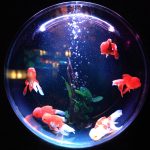Aquarium Lighting – Enhance the Beauty of Your Underwater World
Are you an aquarium enthusiast looking to create a captivating underwater world? One key element that can significantly enhance the beauty of your aquarium is proper lighting. In addition to illuminating your aquatic environment, aquarium lighting is essential for the general health and wellbeing of your fish, plants, and corals.
The many types of aquarium lighting, things to think about when selecting the correct lighting, the advantages it gives, how to set it up, and important maintenance advice are all covered in this article. Get ready to bring your underwater world to life with stunning lighting effects!
I. Introduction
A. Importance of aquarium lighting
Proper lighting in an aquarium is crucial for several reasons. It provides essential illumination for viewing your aquatic pets and creates a visually pleasing environment. Additionally, aquarium lighting serves a functional purpose by enabling photosynthesis in live plants and supporting the growth of coral reefs. The right lighting conditions also play a role in regulating the behavior and overall well-being of fish and other inhabitants.
B. Purpose of the article
The purpose of this article is to guide aquarium hobbyists in understanding the significance of aquarium lighting and help them make informed decisions when selecting the most suitable lighting options for their specific setups. We will cover various types of aquarium lighting, factors to consider when choosing lighting, the benefits it offers, setting up the lighting system, and the maintenance required for long-term success.
II. Types of Aquarium Lighting
A. Incandescent Lighting
Incandescent lighting was one of the earliest forms of aquarium lighting. It uses a heated filament to produce light and has been largely replaced by more efficient options. While it can still be found in some older setups, incandescent lighting is not recommended for most aquariums due to its low light intensity and limited spectrum.
B. Fluorescent Lighting
Fluorescent lighting is a popular choice among aquarium enthusiasts. It is energy-efficient, provides a good light spectrum for plant growth, and comes in a range of sizes and intensities. However, fluorescent bulbs need to be replaced periodically, and they may not be suitable for tanks with deeper water or specific lighting requirements.
C. LED Lighting
LED (Light Emitting Diode) lighting has gained significant popularity in recent years. It offers numerous advantages, including high energy efficiency, long lifespan, customizable light spectrum, and the ability to simulate natural lighting conditions. LED lights are available in various colors and intensities, allowing you to create stunning visual effects and cater to the specific needs of your aquarium inhabitants.
D. Metal Halide Lighting
Metal Halide lighting is a high-intensity lighting option primarily used for large, reef aquariums with demanding light requirements. It provides intense light output, which is ideal for deep tanks and tanks with light-hungry corals. However, metal halide lighting can generate considerable heat and consume more energy compared to other options.
III. Factors to Consider When Choosing Aquarium Lighting
A. Light intensity and spectrum
The light intensity and spectrum should match the needs of your aquarium inhabitants. Different species of fish, plants, and corals have specific light requirements. Researching their lighting needs will help you select the appropriate intensity and spectrum to promote their health and growth.
B. Tank size and depth
The size and depth of your aquarium play a crucial role in determining the lighting requirements. Deeper tanks may require more powerful lighting systems to ensure adequate light penetration. Additionally, larger tanks might benefit from multiple light fixtures to distribute light evenly throughout the tank.
C. Plant and coral requirements
If you have live plants or corals in your aquarium, it is essential to consider their lighting needs. Most plants and corals require specific light wavelengths for photosynthesis and growth. Understanding these requirements will enable you to provide optimal conditions for their development.
D. Energy efficiency
Energy efficiency is an important factor to consider when selecting aquarium lighting. LED lights are known for their high energy efficiency, consuming less power while providing sufficient illumination. Opting for energy-efficient lighting options not only helps save electricity but also reduces heat buildup in the aquarium.
IV. Benefits of Proper Aquarium Lighting
A. Enhancing the visual appeal of the tank
Proper aquarium lighting can transform your tank into a mesmerizing centerpiece. It highlights the vibrant colors of fish, corals, and plants, creating a visually stunning underwater world. By strategically illuminating certain areas and adding depth to the tank, lighting effects can bring a new dimension to your aquarium.
B. Supporting plant and coral growth
For aquariums with live plants or corals, proper lighting is essential for their growth and vitality. Photosynthesis, the process by which plants and corals convert light into energy, relies on the right intensity and spectrum. Providing adequate lighting ensures that your aquatic plants and corals thrive, contributing to a healthy ecosystem.
C. Mimicking natural lighting conditions
Aquarium lighting can replicate the natural lighting conditions found in the habitats of your aquarium inhabitants. This helps create a more natural and stress-free environment for fish, as they rely on light cues for their behavioral patterns. By simulating the day-night cycle and adjusting the light spectrum, you can establish a more realistic setting for your underwater world.
D. Promoting fish health and behavior
Proper lighting has a positive impact on the health and behavior of your fish. It can stimulate their natural instincts, encourage natural feeding behaviors, and reduce stress. Additionally, certain fish species exhibit vibrant colors under specific light conditions, which can be enhanced by using appropriate lighting setups.
V. Setting up Aquarium Lighting
A. Positioning the lights
The positioning of your aquarium lights is crucial to ensure even light distribution. Placing lights too close to the water surface may cause excessive heat and create uneven lighting. On the other hand, lights positioned too high may result in insufficient illumination for the lower regions of the tank. It is recommended to consult the manufacturer’s guidelines and adjust the height and angle of the lights accordingly.
B. Selecting the right fixtures
When selecting lighting fixtures, consider factors such as tank size, light intensity, and the specific needs of your aquarium inhabitants. Some fixtures come with adjustable settings, allowing you to fine-tune the light intensity and color spectrum. It is advisable to invest in high-quality fixtures that offer adequate durability and versatility.
C. Setting up a lighting schedule
Establishing a lighting schedule is essential for maintaining a consistent light cycle in your aquarium. Most aquarium inhabitants thrive on a regular day-night pattern. Use a timer to automate the lighting schedule, ensuring that the lights turn on and off at specific times each day. A gradual transition between light and darkness can help minimize stress for your aquatic pets.
VI. Maintenance and Care for Aquarium Lighting
A. Regular cleaning of light fixtures
To ensure optimal performance and longevity of your aquarium lighting, regular cleaning is necessary. Dust, algae, and mineral deposits can accumulate on the light fixtures over time, reducing their efficiency. Gently clean the fixtures using appropriate cleaning solutions or a mild detergent, following the manufacturer’s instructions.
B. Replacing bulbs and LEDs
Bulbs and LEDs in aquarium lights will eventually degrade over time. As their output diminishes, it is crucial to replace them to maintain the desired light intensity and spectrum. Monitor the lifespan of your lighting components and replace them according to the manufacturer’s recommendations.
C. Monitoring light intensity and spectrum
Regularly monitor the light intensity and spectrum to ensure it meets the requirements of your aquarium inhabitants. Light meters can be used to measure the intensity, and spectrometers can help assess the spectrum. Adjust the settings or replace the bulbs/LEDs if necessary to provide the optimal lighting conditions.
VII. Tips for Aquarium Lighting Success
A. Avoiding light intensity extremes
Extremes in light intensity can negatively affect your aquarium inhabitants. Very bright lights can cause stress, while insufficient lighting can lead to poor plant growth and faded colors in fish. Aim for a balanced light intensity that suits the needs of your specific aquarium setup.
B. Balancing lighting and nutrient levels
Proper lighting should be accompanied by appropriate nutrient levels in the aquarium. Photosynthesis in plants and corals requires not only light but also essential nutrients like carbon dioxide and fertilizers. Maintaining a balance between lighting and nutrient levels ensures healthy plant growth and prevents algae overgrowth.
C. Adapting lighting for different aquarium types
Different types of aquariums, such as freshwater, saltwater, or reef tanks, may have varying lighting requirements. Research the specific needs of your aquarium type and adapt the lighting accordingly. For example, reef tanks with light-dependent corals may require stronger lighting compared to freshwater planted tanks.
VIII. Conclusion
In conclusion, aquarium lighting plays a vital role in enhancing the beauty and health of your underwater world. By choosing the right type of lighting, considering the needs of your aquarium inhabitants, and maintaining the lighting system properly, you can create a captivating environment for your fish, plants, and corals. Remember to balance light intensity, provide the right spectrum, and mimic natural lighting conditions to ensure a thriving ecosystem. With the right lighting setup, you’ll have an aquarium that becomes the focal point of any room, delighting both you and your guests.
IX. FAQs
- How long should aquarium lights be on? Aquarium lights should be on for around 8 to 10 hours a day. It is essential to provide a consistent light cycle to mimic natural day and night patterns.
- Can I use regular household bulbs for aquarium lighting? Regular household bulbs are not recommended for aquarium lighting. They may not provide the necessary light spectrum and intensity required for the health and growth of aquatic plants and corals.
- What is the recommended light spectrum for freshwater plants? Freshwater plants generally require a light spectrum between 6,500K to 7,500K for optimal growth. This range closely resembles natural daylight.
- How often should I replace the bulbs in my aquarium light? Bulbs in aquarium lights typically need to be replaced every 6 to 12 months, depending on the manufacturer’s recommendations and the bulb’s lifespan.
- Can I use colored lights in my aquarium? While colored lights can create a visually appealing effect, it is essential to ensure that the light spectrum still meets the needs of your aquarium inhabitants. Avoid using colored lights exclusively as they may not provide sufficient wavelengths for photosynthesis and overall health.




